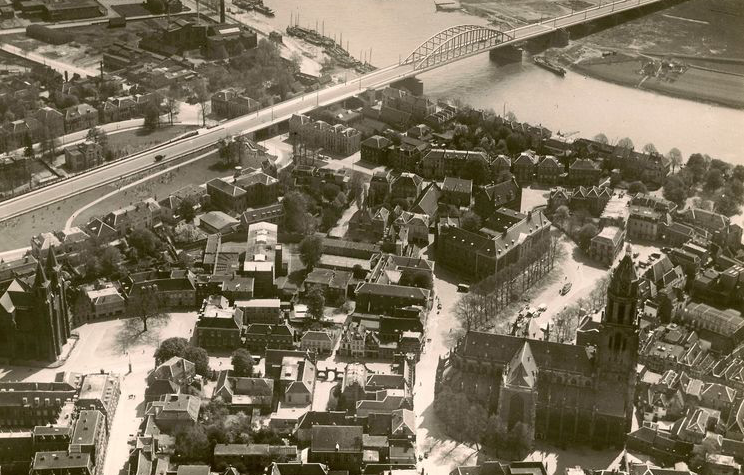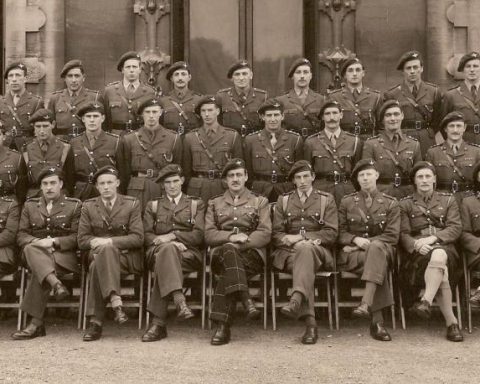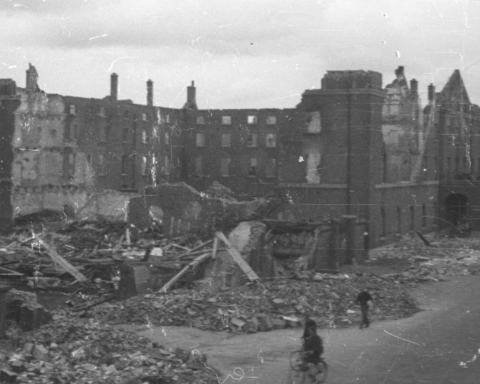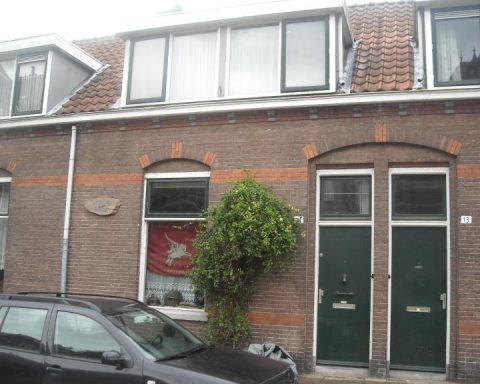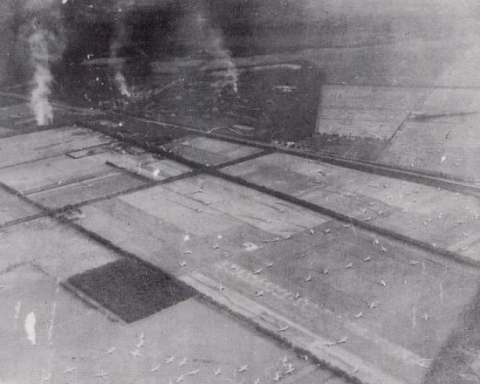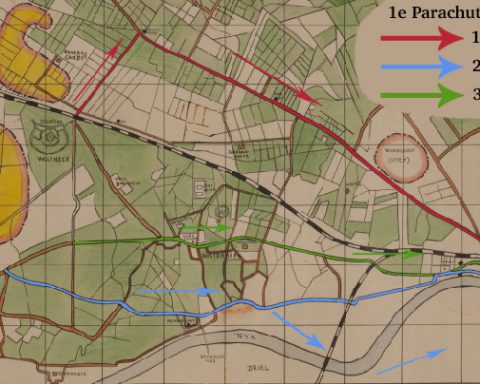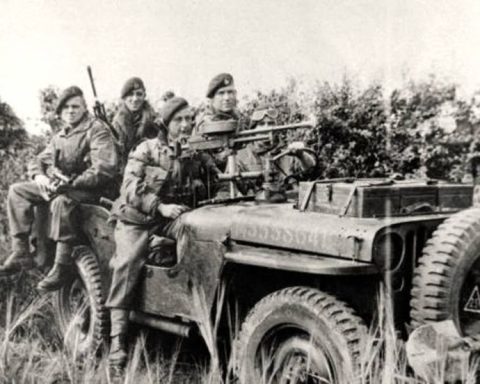On Wednesday evening, September 20, the British soldiers had to give up their position at the Rhine Bridge in Arnhem. About 130 British tried to break out via the Walburgis Church.
Despite their relatively light armament, the British paratroopers defending the north side of the Rhine Bridge proved to be able to withstand the attacks that the Germans made on their positions.
Because the Germans had suffered heavy losses at the bridge on Monday, September 18 and Tuesday, September 19, German commander Walter Harzer decided to change tactics.
With the help of six Tiger VI tanks, the buildings occupied by the British were set on fire one by one. If a building was on fire, the British defenders were forced to evacuate their position.
As a result of this German tactic, by the end of Wednesday afternoon, September 20, the British paratroopers only had a few buildings in their hands, all of which were on fire. An attempt to break out via the city center towards Oosterbeek was the only option for the paratroopers. There were simply no buildings left to defend.
Major Tony Hibbert wrote an account of this attempted breakout a few weeks after the Battle of Arnhem:
“As the brigade headquarters was ablaze, the order was given to evacuate the wounded to Captain Bell’s house. However, the available space was completely insufficient because the only part of the house that was not bombarded was the space under the stairs and part of the hallway. There were about 250 wounded and the available space was quickly filled.
At this point the Germans began to use the same tactics that had
proven so successful at the brigade headquarters, and because the house was made largely of wood it soon burned fiercely. At the time I was exploring some houses to the north on Walburgisplein, which I found unoccupied. I placed a section of about 10 soldiers in these houses and returned to the brigade headquarters, where I found considerable confusion.”
The confusion that Major Hibbert spoke of is an understatement. The brigade headquarters was burning heavily at the time. The entrance had been blocked by the wounded, and a large number of wounded had now been evacuated from the burning building and lay outside, while German mortar shells fell around them.
Major Tony Hibbert reported to Major Gough, who had spoken to Colonel Frost. It was decided to arrange an armistice while the British wounded were evacuated and handed over to the Germans. Hibbert: “There was no alternative.”
Breakout
During the armistice, Major Gough and Major Hibbert discussed what options remained. Hibbert said that he had stationed some men near the Walburgis Church and that he thought it best to break out in that direction.
Of the 750 British who initially fought at the bridge, there were about 130 left at that point who had not been killed or wounded. In the smoke of the fires and the chaos resulting from the ceasefire, 130 British people managed to break out in the early evening of Wednesday, September 20.
Gathering took place at the Walburgiskerk and the houses on Walburgisplein. The church itself was still smoldering at that time. A German Messerschmidt had crashed into one of the towers a day earlier, setting the roof of the church on fire and severely damaging the church.
Tony Hibbert: “Captain Miller had conducted a quick reconnaissance in the meantime. He found a large school and the men were placed in it.”
The school Hibbert is talking about was the Roman Catholic Girls’ School at Walburgisplein 16.
It was now around midnight and a decision had to be made about further action.
Hibbert: “The men were already grouped into two platoons, each consisting of five sections with an officer in charge of each section. The ammunition supply was worrying. The men were also very exhausted.”
The more than a hundred British who were hiding in Walburgisstraat still hoped that they would be relieved by the arrival of XXX Corps, but because they heard no shooting sounds from the south, they rightly concluded that XXX Corps was not yet approaching.
Oosterbeek
Hibbert decided to break out with the remaining soldiers in the direction of Oosterbeek.
“The school we occupied was not ideal for a defense and offered no leverage on the bridge. If we didn’t control the bridge, we couldn’t really influence the battle.”
“The best way to reach the main force would be to infiltrate the city in sections, each under an officer. I gathered the section commanders and gave the order to break out to the west with their sections and get as far as possible to Oosterbeek while it was night.”
The Germans had now realized that a large group of English soldiers was in the vicinity of the Walburgis Church.
Hibbert: “The entire area was under continuous mortar fire, which caused no damage. Eventually, Walburgisplein became full of sections that ran together. This was caused by several sections walking back because they had encountered Germans in Walburgstraat and failed to break through. So I held the last three sections in until everyone had regrouped and disappeared.”
“I then ordered the last three sections to leave and took command of the last group. It was almost light now so I decided to hide them as quickly as possible. I found the ruins of a burned building, dispersed the men and gave orders to hide under the ash and debris until the next night.”
“After a while it became clear that this was impossible, because the ash remains were much too hot. I therefore moved the men into the garden of the house next door where we found Major Munford and his squad.
I joined my group and placed two men in a work shed and barricaded the rest in a bedroom. Dennis Munford crawled under a wooden box while Anthony Cotterill and I hid in a coal shed.”
However, Major Tibbert was captured on the morning of Thursday, September 21, like most of the 130 British soldiers.

